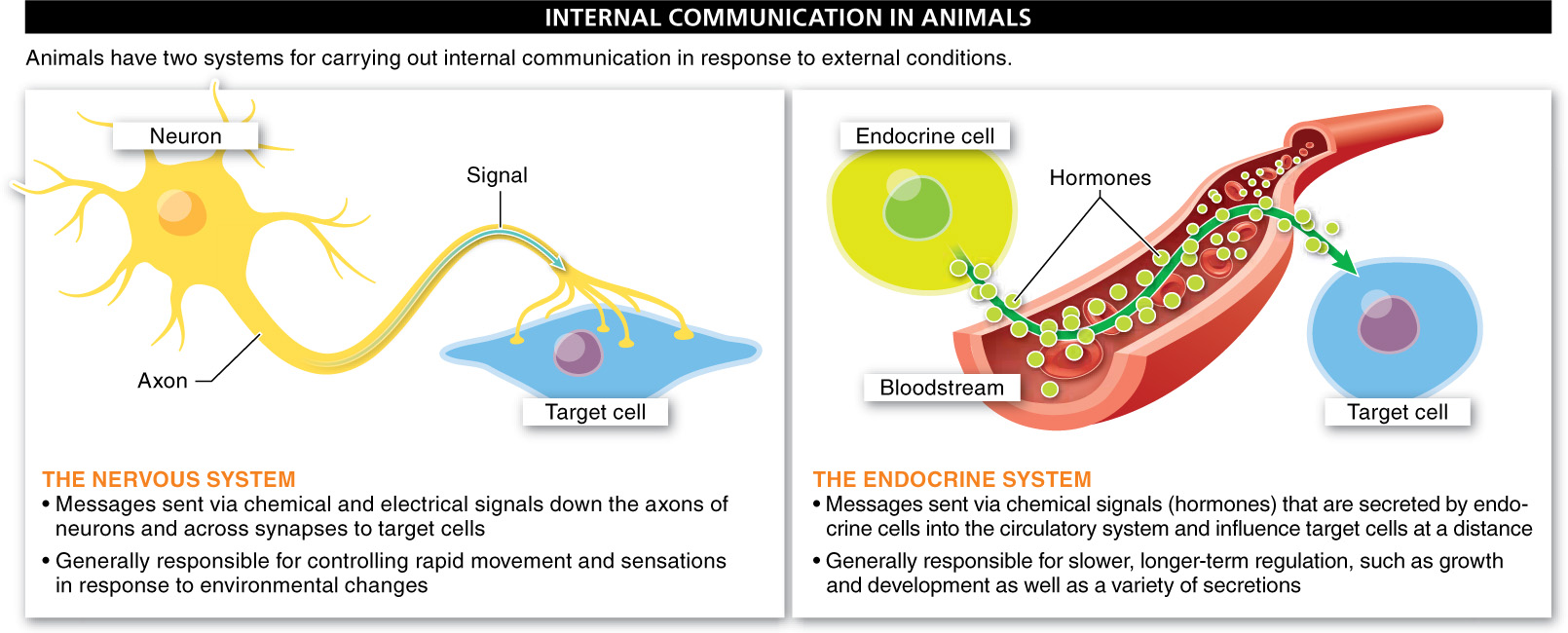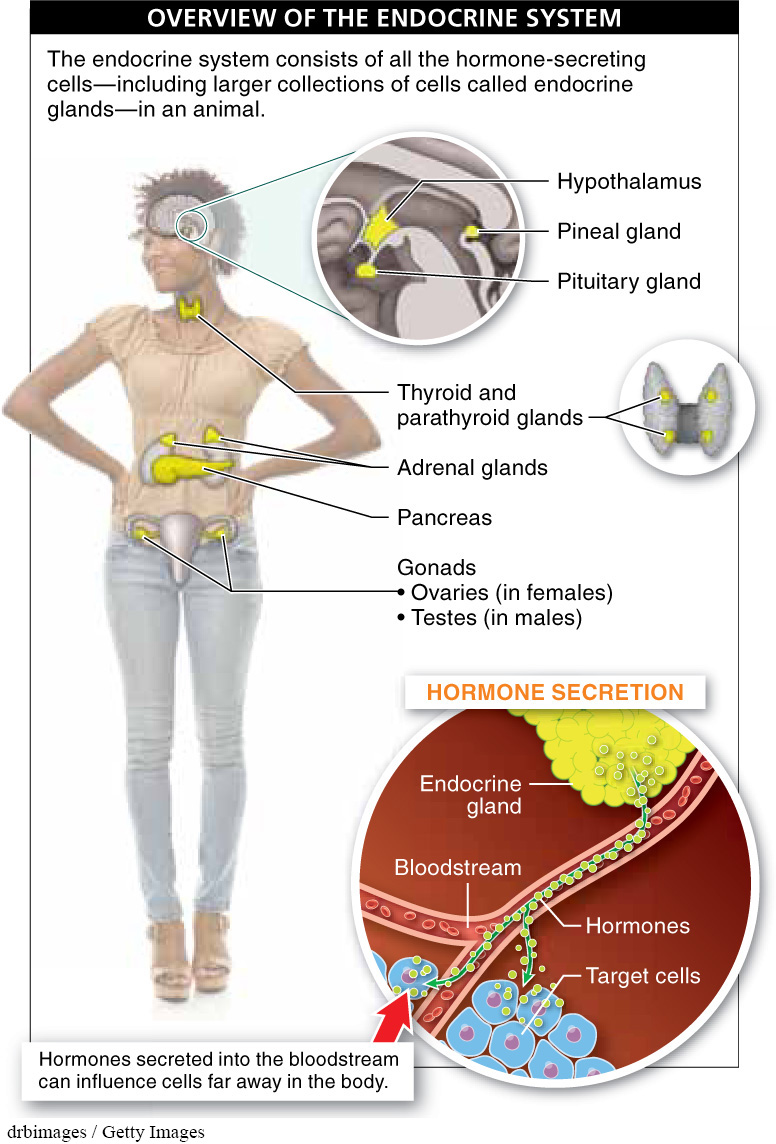24.2: Hormones travel through the circulatory system to influence cells elsewhere in the body.
You wouldn’t use the postal service to notify the fire department that your house is burning down. Similarly, you probably wouldn’t use the phone to convey the complex details of a contractual agreement or architectural plans—



Animals need ways to respond to the outside world: ways of sending signals about certain conditions and giving instructions to tissues to respond to those conditions. There are two systems in animals for carrying out this internal communication and regulation (FIGURE 24-2). As we saw in Chapter 23, the nervous system generally is responsible for controlling rapid movement and sensations in response to environmental changes. In multicellular animals, including humans, there is another system as well, with a special type of messenger. Hormones (from the Greek word meaning “that which sets in motion or urges forward”) are a type of chemical messenger, secreted by cells into the circulatory system (the bloodstream or, in insects, the hemolymph), that influences the actions of cells elsewhere in the body, as part of an internal communication and regulation system. Oxytocin, described in Section 24-
972
Cells that secrete hormones are called endocrine cells, and the cells that receive their signals are called target cells. The hormone-
While the nervous system controls rapid movements and sensations, the endocrine system controls chemical signals that influence cells close to and far from the secreting cells. In contrast to the nervous system, the endocrine system is generally responsible for longer-
When a hormone gets to a target cell, it elicits a response. Commonly, the hormone’s effect on a target cell is to alter the animal’s physiology to help the organism maintain homeostasis. In doing so, the hormone may alter the target cell’s metabolism or growth, spur cell division, or initiate some developmental pathway.
973
Another type of chemical messenger, called a pheromone, is considered an “ecto-
TAKE-HOME MESSAGE 24.2
Hormones are chemical messengers, secreted into the circulatory system by endocrine cells and endocrine glands. Hormones influence the actions of target cells elsewhere in the body, as part of an internal communication and regulation system.
What are the two internal communication systems in animals? How are they similar? How are they different?